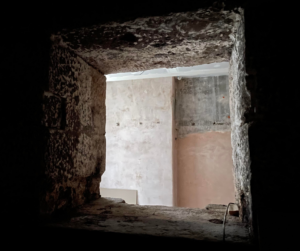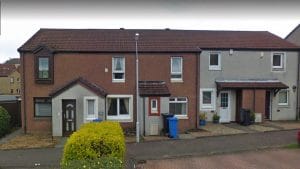What is the step by step process we go through when looking at a property and analysing it as a deal? This article aims to answer this important question. Here, I will be pulling the various elements together to give you an overall roadmap of what I do for our typical property acquisition. It will vary project by project and of course it is not a binary process, where I complete one step and then start the next. Some of this will be running simultaneously.
Based around the purchase and development of existing properties, some of these steps will still relate to land purchase and new build, but some wont. Unless you are always going to stick to one strategy for the rest of your life though, it is always worth keeping your mind open to other ideas.
Let’s say we have identified a property and now we want to work out if this is going to be a ‘goer’. When I started out, this process was a bit chaotic because I didn’t really know what I was doing. And to be fair it wasn’t so much a process as much as it was an obsession. Once I identified a property that I thought had good potential I would then concentrate all my efforts on that particular building and forget about looking at any others. I have since learnt, that is not the best strategy. Even when you have found “the one”, keep looking and analysing others. You need to get lots of potential properties into the hopper to speed up the process. Otherwise it will take a long time until you really do find a project that you are willing to go all the way with.
There are 2 things going on here of course. One is understanding the opportunity, the analysis of the deal if you like, and the other is the timing of communications with the other side. I’m going to try and cover both as I go through these steps.
Step 1: What is wrong with the property?
…Or, what can I do to make it better? You see, the problems are two-fold: Your opportunities to increase the potential income, and the factors you can use to negotiate on the price. This is much more relevant to older buildings but it can still be relevant to modern spaces. Or at least modern fit-outs where things might not have been as well thought out as they could have or the design was too bespoke for the previous building use and are now a restriction for the future.
Examples might include:
A building that has a messy layout or too much travel space and not enough lettable space.
OR a building where there is a lot of subdivision which might not suit modern single occupiers.
It might be the building is just too big for most smaller businesses.
Some of the property is not let and has been vacant for some time.
Out of date heating systems, multiple entrances or poor access.
If you can find solutions to the problems, then you can add value. So ask yourself “what are the problems that others will see?” and work out if they can actually be your opportunities.
Step 2: Price
Well, I say he second step but really, simultaneously while this is all going on, I try to really find out the expected vender’s minimum sales price will be. This would be through the agent or the vendor directly. It will take time to get to this figure and the first number is not the end number. You need to build up rapport with the agent or vendor.
I wouldn’t ask a million questions straight away, even if you have a bunch. I would use all those questions that you might have as a reason to reach out to the other side on a regular basis in order to build rapport and develop some kind of relationship. The more in depth the questions over a longer period of time, the more they emotionally get involved and the more serious you will appear to be. You will give the impression that you are serious and fully studying the project. So once your offer negotiation begins, they know you have fully researched the project.
Step 3: Competition
You can learn so much from studying the alternative offerings out there for your potential customers. Check out the competition for a price comparison and an indication of local demand. Remember though while you do this, the competition can be a wider set of offerings than you think. For instance, if you are looking at self-storage, the other options for potential customers are not just self-storage yards. It could be single let garages, small industrial units, removal companies and even peoples own spare bedrooms. Then we need to find out what the square foot price is elsewhere in the area in terms of selling price and rental income.
By doing this analysis, you should be able to identify the gaps in the market and how much you should be able to charge for your proposed offering.
I have mentioned before how the commercial market is made up of several layers which can make it appear to be a bit more complex. Once you understand how the different layers work, it will be easier to identify where the gaps are. Whether that be in the product sector, contract type, location, quality of offer and ultimately the price point.
Step 4: Rental Rate
Can you increase the rental rate above the existing or the current market level? Is the price for the target property cheaper than the market? If not, what can you do to improve the overall price per square foot? This might be by changing the space from industrial to office or improving the quality of the office space. It could be by introducing more windows or improving the entrance and communal areas. This could mean the square foot rate could increase from say £10/ft2 to £13/ft2 or a lot higher.
It might be that the overall offer is improved. One of our favourite ways to improve customer value and therefore the amount we can charge, is to put in other services. Including at least one member of staff who can look after our customers on a daily basis. This can massively increase the amount that customers are willing to pay.
Step 5: Space Efficiency
What can I do to increase the net lettable area? It is the same as residential. You might not be able to increase the overall area of a flat or apartment but you might be able to change the layout to be more efficient. Such as making a 2 bed flat from a 1 bed flat by increasing the kitchen size to offer a kitchen living space and creating a 2nd bedroom for the remaining original lounge. The property still has the same overall area, but now the rent can be increased.
It is very possible to do the same in commercial. One project we bought a few years ago had a particular floor where the toilets were over a window space. There were three sets of stairs & entrances to the floor and masses of travel space between them all. We ended up moving the toilet core to the centre of the property which released some valuable window space. We have found that people want windows in their work space.
We managed to remove a set of stairs and close off two access points. This meant we made the space about 30% more efficient which increased the overall net area we could let. Even though the gross floor area was still exactly the same. That is without considering any uplift from increasing the quality of the space which in turn can increase the income potential.
Related considerations are:
Window layout.
Toilet core.
Corridor access, related to fire and keeping the travel space down to increase the lettable area.
Services, for tea points as well as other options for toilet locations.
External access, is there more than one so we can phase works?
Land, dead space, opportunities.
Step 6: Operational Costs
If your project is looking like it’s still worth investigating further, then let’s look at what day to day operational costs might add up to. We need to assess how they would stand up against the potential income we could generate. There can be a lot of things to add up if you are going for a fully serviced model. Less so if it’s more a of a standard leased offering.
It’s also really important if you’re trying to buy an existing multi-let building, or one with a separate service charge, to get hold of the profit and loss from the vendor to work out if there are improvements you can make on the P&L. For example, by changing suppliers.
Step 7: Redevelopment Costs
It’s important to budget what your costs are going to be, of course. Then you can work out the potential return. Remember every project is different, so these will vary a lot.
Once you have worked out the customer offer, improvements you can make, the potential income it will generate, less the operational costs, then you can work out the overall amount you are willing to pay for your target ROI.
When you have worked out your redevelopment cost and costs of acquisition, then you will have the target purchase price.
Step 8: Offer & Heads of Terms
Get an offer in, but do it through your lawyer, not on the phone or by an email… (there may have been some chat beforehand but get something official over).
Once you have done all of this work then you have the basis for explaining what the building is worth to you and the reasons for your offer level.
‘Heads of Terms’ are then drawn up which is non committing but establishes the principles of the deal such as price, entry date etc.
Step 9: Pay Some Fees.
Only now do I look to pay for a survey, through the potential lender. If I need to pay an engineer or heating engineer, then this is when I would start to do that. Anything that comes back negative can be used to negotiate further on the price, if it was unforeseen. Yes, you can do that at this point as the Heads of Terms was not legally binding.
Now you also get your lawyer to view the title plan & deeds and start to pay for the legal stuff. There could still be something that might come up and blow the deal out of the water but at least you have narrowed down the risk by doing a lot of the analysis up front. Only now are you paying for legal costs.
Step 10: Find the Money & Get the Deal Done
“Find a good deal and you should find the money” they say. Well you have to lay some ground work first. Once you have an established angel or traditional broker network then you might be able to find the money. It is a bit chicken n’ egg. You need to be trying to find different ways to access cash before this deal ever came along. It is one of those things you are running in parallel to this process.
Get the deal details out there and work towards closing the deal. Just remember you are not committed until you are legally committed.
I hope that helps. Of course, once you have reached step ten, only then does the real fun begin. But that’s a whole other set of topics!
For further information, join our Facebook group to meet others on their commercial property investment journey.
If you are in a hurry then get in touch to see how we can help.






